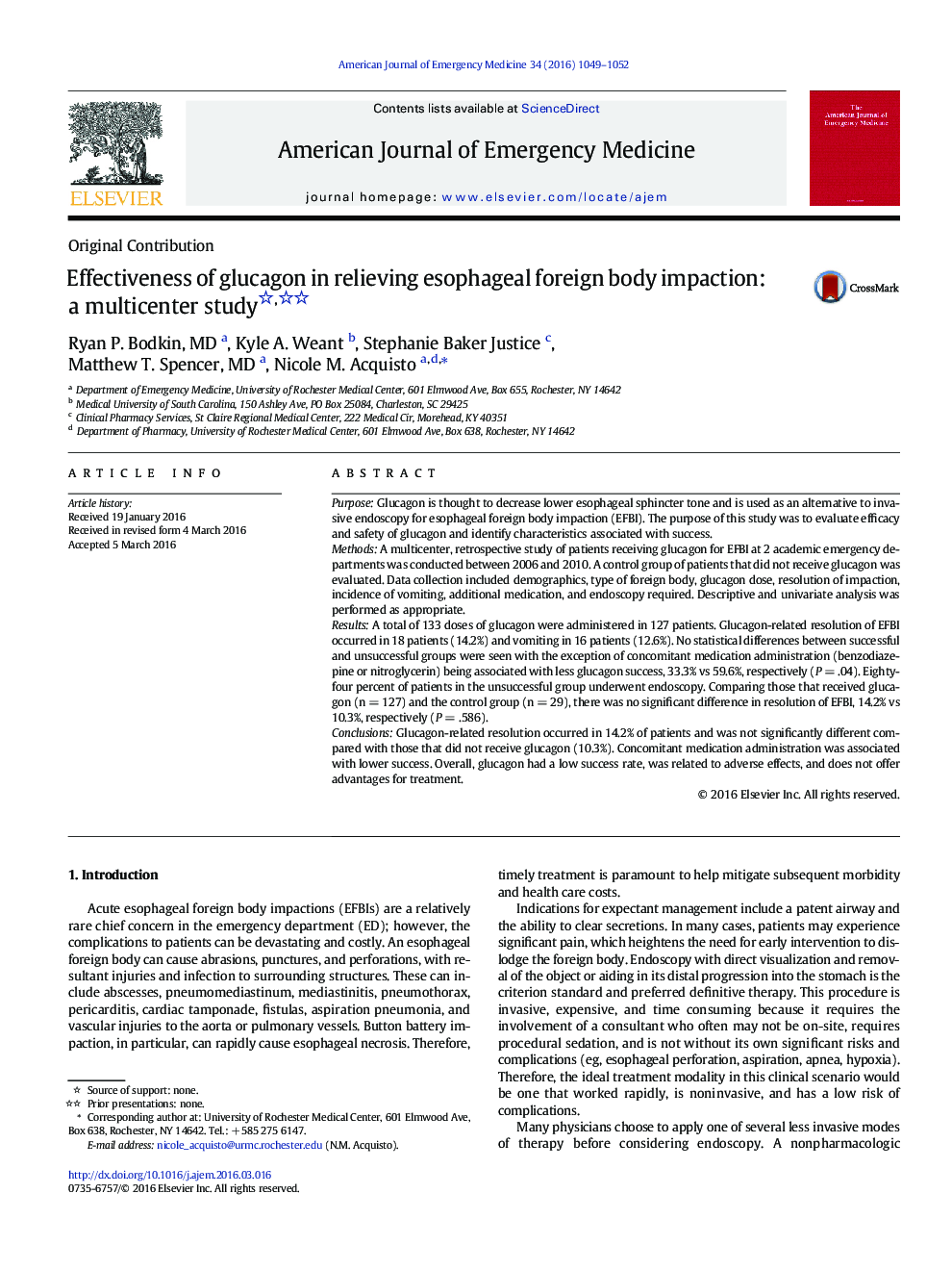| Article ID | Journal | Published Year | Pages | File Type |
|---|---|---|---|---|
| 3223122 | The American Journal of Emergency Medicine | 2016 | 4 Pages |
PurposeGlucagon is thought to decrease lower esophageal sphincter tone and is used as an alternative to invasive endoscopy for esophageal foreign body impaction (EFBI). The purpose of this study was to evaluate efficacy and safety of glucagon and identify characteristics associated with success.MethodsA multicenter, retrospective study of patients receiving glucagon for EFBI at 2 academic emergency departments was conducted between 2006 and 2010. A control group of patients that did not receive glucagon was evaluated. Data collection included demographics, type of foreign body, glucagon dose, resolution of impaction, incidence of vomiting, additional medication, and endoscopy required. Descriptive and univariate analysis was performed as appropriate.ResultsA total of 133 doses of glucagon were administered in 127 patients. Glucagon-related resolution of EFBI occurred in 18 patients (14.2%) and vomiting in 16 patients (12.6%). No statistical differences between successful and unsuccessful groups were seen with the exception of concomitant medication administration (benzodiazepine or nitroglycerin) being associated with less glucagon success, 33.3% vs 59.6%, respectively (P = .04). Eighty-four percent of patients in the unsuccessful group underwent endoscopy. Comparing those that received glucagon (n = 127) and the control group (n = 29), there was no significant difference in resolution of EFBI, 14.2% vs 10.3%, respectively (P = .586).ConclusionsGlucagon-related resolution occurred in 14.2% of patients and was not significantly different compared with those that did not receive glucagon (10.3%). Concomitant medication administration was associated with lower success. Overall, glucagon had a low success rate, was related to adverse effects, and does not offer advantages for treatment.
